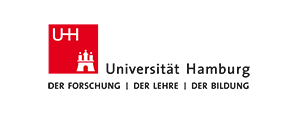Minutes of the fourth International Radiative Transfer Workshop,
July 2002
Monday
Tuesday
Wednesday
Thursday
Whole Week
-----===== THURSDAY 2002-07-11 =====-----
Working Group Scattering
------------------------
CE: discussion of the different approaches of the RT equation from the
mm (ARTS) and vis/UV (STORM model) region for the different parts,
extinction/scattering/absorption.
Successive order scattering model in ARTS-1.1 (e.g. loops until
convergence)
Ute: This loop is sensitive to the evaluation of the phase matrix
since you loop many times over the phase matrix integral.
CE: STORM and ARTS handle diffuse polarized light
ARTS handles also rotationally symmetric aspherical particles while
STORM handles spherical particles.
STORM uses Fourier decomposition of the phase matrix and intensity
between azimuth and zenith angles (only possible for spherical particles).
NK: JM has shown that in the mm range the calculation shows that
the scattered waves are coherent in the forward-backward
directions. ARTS assumes incoherence in all directions.
CE: plans:
- use of Gauss-Loballo quadratures method used for integration
- check if the convergence of RT equation is also possible for
larger optical depths.
- use of Tim Rother (DRL) data base for cloud particles
Ute: interaction principle in STORM:
describe the way of the light through the different layers of
the atmosphere in terms of emission, reflection and
transmission. This includes already multiple scattering.
It should also be possible to use this approach for ARTS.
Ute: one should be aware of how the treatment is with contributers to
ARTS from outside Bremen/Goeteborg. How are contributers treated
with respect to publications and ARTS distribution and such
stuff? How is the policy?
PE: Bremen should create a www page about this workshop results with
results and links.
PE: we hope for a next workshop next year at Bredbeck.
PE : Instead of just discussing the forward models, we can include
retrieval methods in the future workshop
A brief note on our discussions can be found here(ps format).
A detailed description of the STORM model is also accessible(ps file).
The figures can help in understanding the geometry(ps file) and
integration scheme(ps file).
Working Group Validation and Comparison Model vs. Data
------------------------------------------------------
MK: AMSU-A/B data analysis
match of ARTS/radiosonde data vs. AMSU-B data
good agreement for channels 17/18/19/20
channel 16 agrees with ARTS by using an optimized emissivity
AMSU-A: ch. 4/5/6 we see a slope in the comparison,
data is higher in TB than ARTS/radiosonde predict.
suggestion to do the analysis for another location
Cabauw (NL) where SC and TH have some measurements done.
VJ: emissivity retrieval for Cabauw (NL) to see the robustness of the
retrieved emissivity at Lindenberg.
SC: CLIVANET measurements (part of BALTEX experiment) at Cabauw (NL)
Intercomparison with standard abs. models. for 20-90GHz
differences of up to 2K@30GHz and 7K@90GHz(?) are seen.
At 90GHz the diff. can not be explained at the moment.
TH: MARSS ground based measurements at Cabauw (NL).
Additionally airborne based measurements with MARSS were performed
numerously at different climate conditions (equator to poles).
H2O foreign continuum were tried to adjust to data of all the
flights.
Difficulty is that all the lab. data for cont.fit is >273K which
leads probably to differences in the low temperatures of polar
regions.
However, it can not be unambiguously decided from the MARSS data
set which component of the continua has to be updated.
TK: presents comparison between the MARSS/POLEX measurements with ARTS.
Future plans is to compare Atmospheric Radiation Measurement
Program (ARM) data with ARTS different water vapor
absorption models, including the new parameterization of
JQSRT, 2002, vol. 74, pp 545-562, 2002.
Working Group SMILES
--------------------
ED: - New limb submm sounder on ISS developed by Japan NASDA/CRL
which will be launched in 2006.
- New mission plan end of July 2002 available (ask YK for a copy).
- Comparison of retrieval simulation results. In general good
agreement between Moliere, Smiles Simulator and ARTS.
- Structure of the ground based segment discussed (which
inst. processes which level in the data processing chain).
- Baseline retrieval is performed -> will be an additional
option for Moliere.
Working Group ARTS
------------------
DF: installing is quite easy. Documentation for the user installation
and user experiences with ARTS is missing.
action items formulated from this group:
DF: interface to BEAMCAT
OL: easier handling of MSDOS/UNIX line breaks in files
OL: set up ARTS user mailing list
OL: create development platform to allow external developers easier access to
the ARTS cvs repository
PE: clarify hidden spectral line parameters in arts and make it
more transparent (e.g. line broadening for JPL catalog, isotopic ratios).
PE: QPAC running on MS Windows machines
PE confirms that all the ARTS developers from Goeteborg/Bremen will
give as much support as possible for all the ARTS users. However
ARTS-1-0 development will stop now and ARTS-1-1 is in progress. For
normal users ARTS-1-0 should be sufficient and is more stable than
ARTS-1-1 which is a big project for the next years.
------------
ACTION ITEMS
------------
- all participants can contribute to the workshop home page with
additional information either by sending appropriate electronic
versions of a www link whwich will be included in the workshop home
page.
- SC will provide all participants with the necessary information to
access the home page of the CLIVANET measurement campain at
Cabauw (NL).
Monday
Tuesday
Wednesday
Thursday
Whole Week

